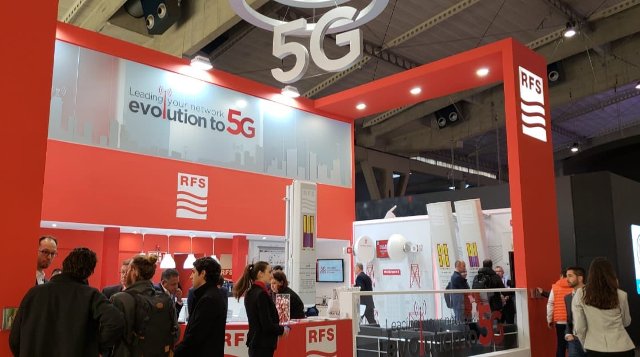5G comes with a huge and varied range of promises, from self-driving cars to a fourth industrial revolution, the hype around the technology is undeniable.
 However, in addition to the much-anticipated promises, 5G also promises to bring a number of stumbling blocks for operators as they look to roll out. Space on cell sites is already at a premium and the volume of equipment that 5G deployments will require is only set to compound that problem.
However, in addition to the much-anticipated promises, 5G also promises to bring a number of stumbling blocks for operators as they look to roll out. Space on cell sites is already at a premium and the volume of equipment that 5G deployments will require is only set to compound that problem.
5G is not a replacement for that which has come before and therefore needs to fit into existing network infrastructure without interference and this is a huge challenge for operators. The cost of site expansion is in many cases prohibitively expensive and fraught with logistical challenges and so the question is, how can 5G be integrated into cell sites without increasing the site footprint?
The end of single purpose equipment
A typical site already supports many different antennas and bands for a variety of purposes and for operators, trying to add new ones also creates a long, expensive, and complicated negotiation process with site owners. Therefore operators must find a smart way of deploying 5G (or LTE-A and 5G-ready) active antennas, with antenna arrays supporting mMIMO technologies, within the existing space.
At the moment every different network technology is delivered by a different antenna. They are positioned on the cell site to minimize interference and ensure maximum performance but each one needs its own space and its own maintenance. As new network generations are developed, this is no longer sustainable; cell sites no longer have the physical capacity to add connectivity capacity in this way. Instead equipment must start to work harder, and in many cases, functions that were spread across several pieces of equipment fitted together into a single antenna.
Applying LEGO principles to telecoms equipment
Most people have fond memories of playing with LEGO as a child. It’s a very simple design that can be used as the basis to make models of virtually anything you can think of. It is versatile in the truest sense of the word; six 2×4 LEGO bricks can be combined in more than 915 million ways. But how do the principles of LEGO help when it comes to solving 5G challenges?
Building antennas that are designed to take various different functions and fit seamlessly together into a single piece of equipment has a huge impact on increasing cell site capacity without expanding. However, the design process which has to take into consideration interference, how to integrate multiple functions into that single antenna, while delivering on performance, can get hugely complicated. This is where modular equipment comes into play, allowing operators to benefit from the LEGO principles of simplicity and versatility.
Put into practice
Active Passive antennas are a perfect example of this in action. They maintain the form factor of typical 4G passive base station antennas, however, have the option of swapping a module retrospectively to integrate active components for 5G. This means it is able to support both 4G and 5G networks in a single piece of equipment.
It combines the passive components needed for legacy frequency transmissions with the active components needed for 3.5 GHz mMIMO transmissions in 5G networks into one antenna. It minimises the space and visual impact and allows operators to achieve more, with less equipment.
Antennas that can take multiple functions and fit them together in a single consolidated form factor will hugely simplify the process of 5G roll outs for operators by removing one of their biggest challenges. The principle this extends far beyond the base station and can be applied at various points within their networks to help operators build the infrastructure they need. Small Cell sites can take exactly the same approach of building multipurpose antennas in a single form factor. Backhaul antennas can take a Dual Band approach, integrating multiple frequencies to increase capacity and act as a failover for critical use cases.
Conclusion
Consolidating equipment to reduce footprint will be one of the biggest trends in network infrastructure over the next few years. It simply has to be to ensure 5G becomes a tangible reality. More needs to be done with less; more capacity, higher throughput, but in less space with lower visual impact. Equipment manufacturers need to make this as simple as possible for their operator customer and by embracing a building block approach they can deliver increased network complexity, while hugely simplifying
Laurent Cruchant, VP Base Station Antenna at RFS





